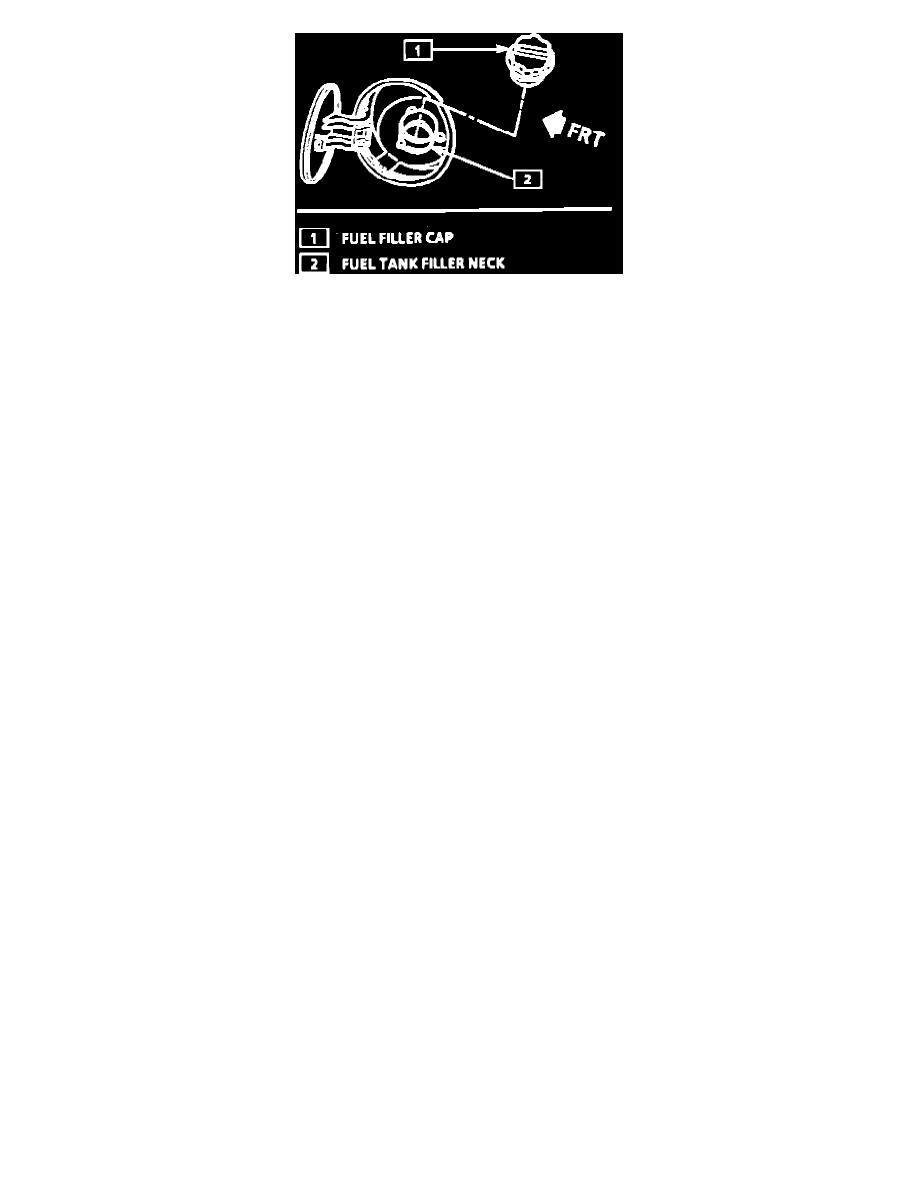Lumina APV V6-191 3.1L (1990)

Fuel Filler Neck And Cap
FUEL FILLER NECK
To help prevent refueling with leaded fuel, the fuel filler neck has a built-in restrictor and deflector. The opening of the restrictor will accept only the
smaller unleaded gasoline nozzle which must be fully inserted to bypass the deflector. Attempted refueling with a leaded fuel nozzle will result in fuel
splashing back out of the filler neck.
FUEL TANK FILLER CAP
The fuel tank filler neck is equipped with a screw type cap. The threaded part of the cap requires several turns counterclockwise to remove. The long
threaded area was designed to allow any remaining fuel tank pressure to escape during the cap removal operation. A ratchet type torque limiting device
prevents over-tightening. To install, turn the cap clockwise until a clicking noise is heard. This signals that the correct torque has been reached and the
cap is fully seated.
NOTE: If a fuel filler cap requires replacement, only a cap with the same features should be used. Failure to use the correct cap can result in a serious
malfunction of the system.
FUEL AND VAPOR PIPES
Nylon fuel lines are designed to perform the same job as the steel or rubber fuel lines they replace. Nylon lines are constructed to withstand maximum
fuel system pressure, exposure to fuel additives, and changes in temperature. There are two sizes used: 3/8" ID for the fuel feed, and 5/16" ID for the
fuel return.
The fuel feed and return lines are assembled as a harness. Retaining clips hold the lines together and provide a means for attaching the lines to the
vehicle. Quick-connect type fittings are used at the ends of the fuel feed/return lines and at the in-line fuel filter. Sections of the lines that are exposed to
chafing, high temperature or vibration are protected with heat resistant rubber hose and/or corrugated plastic conduit.
Nylon fuel lines are somewhat flexible and can be formed around gradual turns under the vehicle. However, if forced into sharp bends, nylon lines will
kink and restrict fuel flow. Also, once exposed to fuel, nylon lines may become stiffer and more likely to kink if bent too far. Special care should be
taken when working on vehicles equipped with nylon fuel lines.
